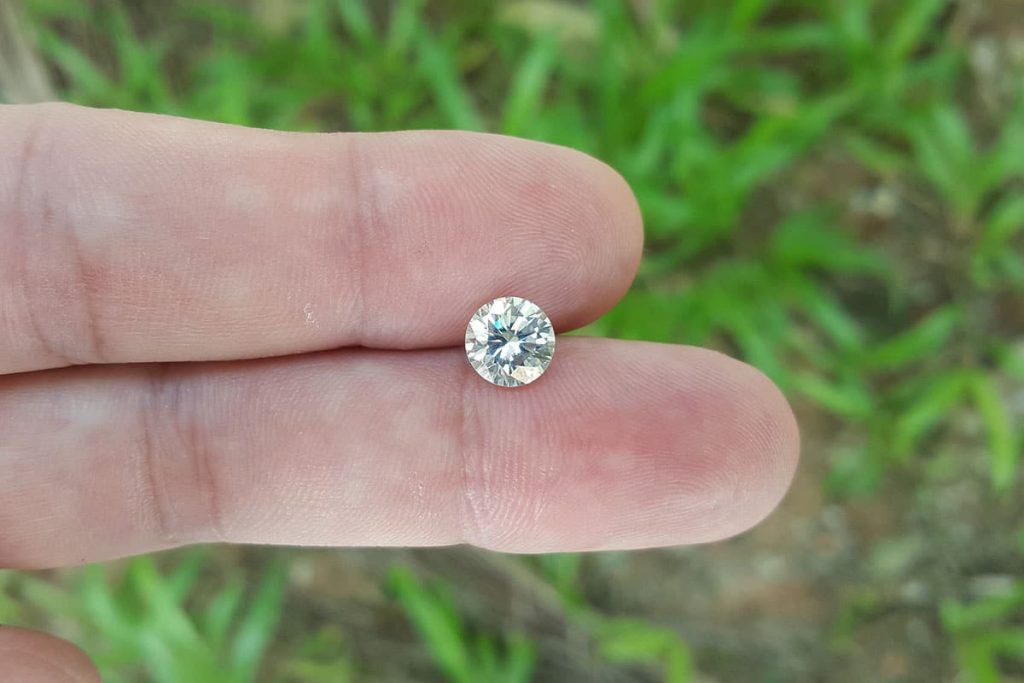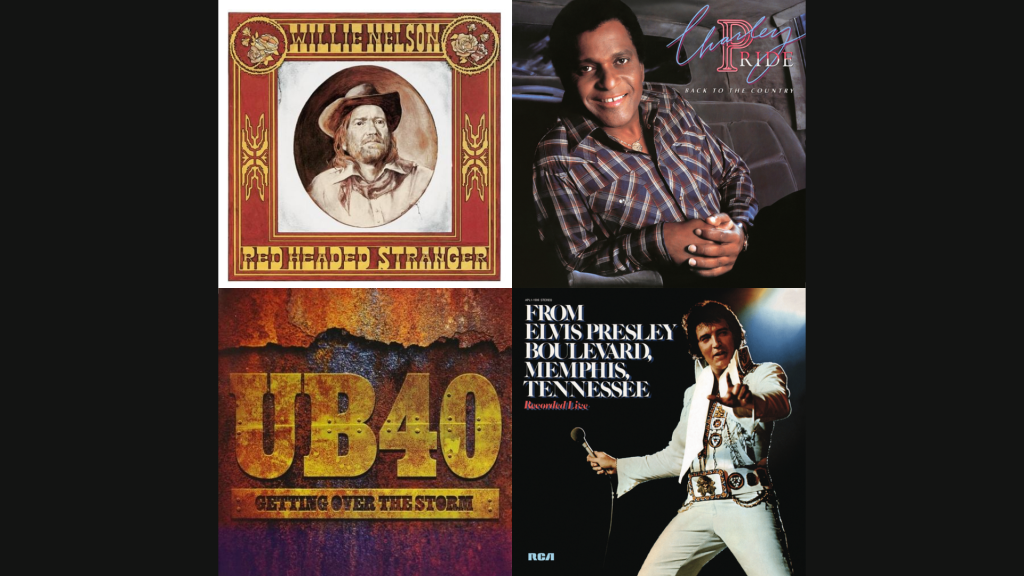Have you ever heard about Moissanite and Cubic Zirconia? They’re both shiny stones that look like diamonds.
We will discuss them to help you know which one might be better for you.
Suppose you’re walking through a jewelry store, and you spot two amazing rings—one claims to be made of Moissanite, while the other flaunts Cubic Zirconia.
What are these gems, and how do they compare? That’s where the Moissanite vs Cubic Zirconia comparison comes in!
Moissanite and cubic zirconia are like cousins of the diamond family. They’re the gemstones that shine like diamonds without the heavy price. Think of them as affordable alternatives that still bring the bling.
In this guide, we’ll learn about Moissanite and Cubic Zirconia, understanding what sets each apart and when you might prefer one over the other.
Let’s find the secrets behind these sparkling stones
Overview of Moissanite

Moissanite is a natural mineral with the chemical formula SiC (silicon carbide).
A French chemist named Henri Moissan discovered it 1893 in an Arizona meteor crater.
At first, people thought it was a diamond because it sparkled and was hard.
But later, they found out it was actually a different mineral. Natural moissanite is very rare, but scientists can make it in labs.
People like using lab-made moissanite instead of diamonds in jewelry because it shines a lot and isn’t expensive.
Moissanite shines with a flash of light with an extra touch of color, which many people find very attractive.
One big advantage of moissanite is that it’s more affordable than diamonds, yet it’s amazingly beautiful.
Plus, it’s really tough and nearly as hard as diamonds, so it doesn’t easily get scratched or damaged when you wear it every day.
Overview of Cubic Zirconia

Cubic zirconia, known as CZ, is a man-made gemstone that closely resembles a diamond’s appearance but is more cheap.
It’s created through a scientific process in laboratories. This gemstone is made from zirconium dioxide, a type of crystal that is carefully crafted to copy the sparkling light of diamonds.
Cubic zirconia’s key feature is its remarkable sparkle and shine. It has a high refractive index, meaning it can bend and reflect light in a way that makes it gleam with vibrant colors.
However, unlike natural diamonds, cubic zirconia is not as hard, so it’s more prone to scratches and wear over time.
Due to its lower cost and diamond-like look, cubic zirconia is commonly used in jewelry such as rings, earrings, necklaces, and bracelets.
It allows people to enjoy the beauty of gemstone jewelry without the high price tag of genuine diamonds.
History and Origin

Moissanite and cubic zirconia are both well-liked diamond alternatives in jewelry, cherished for their beauty and budget-friendly nature.
Moissanite, a mineral made of silicon carbide, occurs naturally and was found by French chemist Henri Moissan in 1893 during an investigation of meteorite fragments in Arizona’s desert.
On the other side, cubic zirconia (CZ) is a man-made gem consisting of zirconium dioxide.
Its history goes back to 1937 when German mineralogists discovered baddeleyite, a natural mineral with the same composition as CZ.
Cubic zirconia gained popularity in the 1980s and 1990s as an inexpensive diamond substitute, offering an amazing shine but not the same durability as diamonds.
Still, cubic zirconia remains widely used in jewelry due to its affordability and close resemblance to diamonds.
Durability and Hardness

When it comes to durability and hardness, moissanite takes the lead.
Ranking second only to diamonds on the Mohs scale, moissanite is highly resistant to scratching and breaking.
This durability ensures that your jewelry remains stunning even with daily wear.
On comparing moissanite and the cubic zirconia, while relatively hard, it falls short of moissanite’s toughness.
CZ can become scratched and might lose its luster over time. This means you’ll need to handle CZ jewelry with care to maintain its look.
However, the toughness of a gemstone is also important, measuring its ability to withstand breaking.
Moissanite ring shines in this area as well, being over three times tougher than CZ, with 7.6 PSI versus CZ’s 2.4 PSI.
The Winner is Moissanite. It is harder than CZ by 1.25 points and three times tougher.
Reaction to Dirt

Both moissanite and cubic zirconia can lose their glitter over time due to dirt and dust buildup.
However, in the moissanite and cubic zirconia comparison, moissanite tends to resist dirt better than CZ.
This means that moissanite stones are less likely to appear dull or cloudy than CZ stones.
This can come from household detergents, cosmetics, body oils, dust, and so on, causing the stones to lose their sparkle and appear dull.
CZ stones, on the other hand, can cloud over more easily, requiring more frequent cleaning to maintain their shine.
So, if you’re looking for a stone that retains its shine with less effort, moissanite might be the better choice.
Value of Moissanite & Cubic Zirconia

When it comes to affordability, both moissanite and cubic zirconia offer cost-effective alternatives to diamonds.
However, there’s a slight difference in their pricing. Moissanite is often priced higher than cubic zirconia jewelry.
This is because moissanite has higher production costs, requiring advanced technology to create.
Despite being pricier than CZ, moissanite is still significantly more budget-friendly than diamonds.
You can get a high-quality moissanite stone for a fraction of the cost of a diamond.
So, if you’re looking for a more affordable option that still maintains a diamond-like appearance, moissanite is a great choice.
Light Performance

Moissanite, with its refractive index (RI) of 2.65, sparkles with a remarkably bright fire, capturing and scattering light beautifully. This means it shines with a vibrant flash that grabs the attention.
However, moissanite’s unique rainbow effect might be a matter of personal preference; under sunlight, it can display flashes of colorful shades.
Some people find this effect captivating, while others might see it as overly showy.
Given the moissanite and cubic zirconia comparison (CZ), it has a lower RI of 2.15-2.18, resulting in less detail in terms of brightness compared to moissanite.
So, a moissanite necklace is mostly preferred. While CZ does possess a certain level of shine, it lacks the intense light performance characteristic of moissanite.
The sparkle of CZ is often described as being more superficial, which means it might not have the same captivating presence as moissanite.
The winner is Moissanite, who wins for glow but may lose for the rainbow effect (depending on how you feel about it).
Color and Clarity of Moissanite & Cubic Zirconia

CZ shows off an almost perfect appearance, consistently achieving high clarity ratings.
This means CZ stones are almost always free from imperfections, displaying a clear and pristine appearance.
Its color grade is typically rated as “D,” which is the highest rating for diamond color. This gives CZ a consistently brilliant and sparkling look.
Moissanite, however, can display some fine tints and imperfections due to its complex production process. These tints might include hints of green, gray, or yellow.
Similar to diamonds, moissanite can contain minor internal defects.
This inherent character, while natural, can result in moissanite having a slightly less uniform look compared to CZ.
This uniqueness can add to the stone but might be a consideration depending on personal preferences.
The winner is CZ, which is almost always flawless in color and clarity. But this can cause it to look unnatural.
Buying Considerations

When choosing between moissanite and cubic zirconia (CZ), some key buying considerations can guide your decision:
1. Trustworthy Sources
Always buy from reputable and trusted sources. Look for well-established jewelers with positive reviews and a solid reputation. This ensures you receive quality stones and a satisfying shopping experience.
2. Check Reviews and Policies
Before making a purchase, read customer reviews. The detailed moissanite vs cubic zirconia comparison can provide insights into the product’s quality and the jeweler’s reliability.
Additionally, review after-sales policies, such as return and exchange policies, to ensure you’re protected.
3. Lab Reports for Moissanite
Unlike diamonds, moissanite often lacks official lab reports. This absence can make it challenging to verify the stone’s authenticity and characteristics.
Therefore, go for companies with a reputation for providing genuine moissanite stones and transparent information.
4. Reputable Companies
Consider purchasing moissanite from established and well-known jewelers.
“Brilliant Earth” is a company known for its commitment to moral practices and high-quality moissanite offerings.
Moissanite offers closer diamond-like qualities in terms of brilliance and durability, making it the best choice for those who desire a premium alternative.
Cubic Zirconia is more affordable but may not possess the same level of durability and sparkle.
5. Cautious of Marketing Tactics
Be wary of marketing tactics, especially when buying CZ. Some retailers might use misleading terms like “zirconium oxide” instead of cubic zirconia.
Familiarize yourself with the terminology to ensure you’re getting what you want.
Consider your budget and how long you intend to wear the stone to make the best choice for your preferences and needs.
Moissanite vs Cubic Zirconia: Which One to Choose?

When comparing Moissanite vs Cubic Zirconia (CZ), both are popular diamond alternatives, but they have distinct characteristics to consider.
Moissanite is a naturally occurring mineral, while Cubic Zirconia is a synthetic crystal. Moissanite is known for its exceptional brilliance and durability.
It’s nearly as hard as a diamond on the Mohs scale, making it suitable for everyday wear. Its glow comes from a unique light dispersion property that gives off vibrant flashes of color.
On the other hand, Cubic Zirconia is also sparkly but may appear slightly less shiny compared to Moissanite.
It is softer than Moissanite and can be more prone to scratching. CZ jewelry tends to be more affordable, which can be inviting to budget-conscious buyers.
The choice between Moissanite vs Cubic Zirconia depends on your priorities.
If you’re looking for a diamond alternative that closely resembles the glow and durability of a diamond, Moissanite might be the better option due to its exceptional sparkle and toughness.
However, if you’re seeking a more budget-friendly option with good sparkle, Cubic Zirconia could be suitable.
Conclusion
Overall, Moissanite vs cubic zirconia comparison can be smart and affordable options for jewelry investments.
But like with any gems or jewelry, it’s important to be careful while shopping. There are scammers out there trying to sell fake diamonds and look-alikes.
So, be cautious when you’re shopping around. If you’re considering a ring with a larger gemstone, moissanite might be your best bet.
It’s harder & tougher than cubic zirconia, making it less likely to break or crack when set in a ring.
On the other hand, if you’re looking for earrings or a pendant, cubic zirconia could be a good choice.
These types of jewelry items are less prone to damage, as they don’t face the same wear and tear as rings.
Earrings and pendants aren’t usually examined as closely, so it’s harder for people to tell if they’re not real diamonds or moissanite.
When it comes to earrings, cubic zirconia is a solid option due to its consistent color grade.
All cubic zirconia stones have a D color grade, ensuring a perfect match. Both moissanite and cubic zirconia offer great shine and great value.
They’re good alternatives for those who want beautiful, clear gemstones without the high price tag.
Frequently Asked Questions
Can We Tell the Difference Between Moissanite and Cubic Zirconia with The Naked Eye?
Generally, it’s challenging to differentiate between the two without specialized equipment due to their similarities in appearance. However, Moissanite’s unique rainbow might be a distinguishing factor.
Which Gemstone is More Suitable for Daily Wear?
Moissanite’s superior hardness makes it more resistant to scratches and suitable for daily wear than Cubic Zirconia.
Do Moissanite and Cubic Zirconia Look Like Real Diamonds?
Yes, both gemstones are designed to resemble diamonds closely, but Moissanite’s optical properties give it a more diamond-like sparkle.
Will Either Gemstone Lose Its Shine Over Time?
While both gemstones are durable, Cubic Zirconia might show signs of wear more quickly due to its slightly lower hardness.
Are These Gemstones Used Only in Rings?
No, Moissanite and Cubic Zirconia can be used in various types of jewelry, including earrings, necklaces, bracelets, and more.
Can I Find These Gemstones in Local Jewelry Stores?
Yes, many jewelry stores offer Moissanite and Cubic Zirconia options alongside traditional gemstones. Additionally, they are widely available online.





















